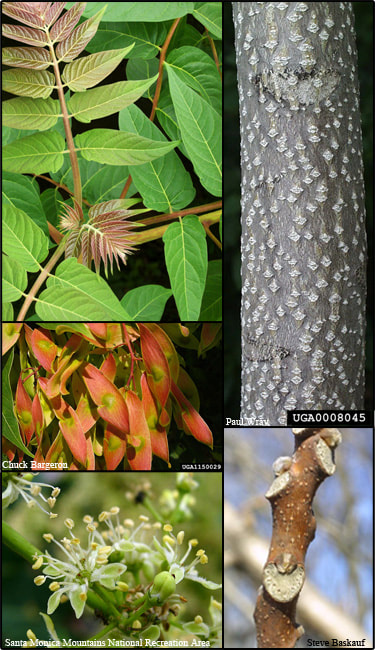Tree-of-Heaven (Ailanthus altissima)
What problems does tree-of-heaven cause? Tree-of-heaven can grow into a very large tree, crowding out any native species that may be trying to compete for the same habitat. Up to 350,000 seeds can be produced annually by a single plant, allowing it to reproduce rapidly. It is allelopathic, meaning it releases chemicals into the soil which inhibit the growth of nearby plants. Tree-of-heaven also helps the invasive spotted lanternfly (which threatens fruit crops and more) by allowing it to complete its life cycle. What does tree-of-heaven look like? This is a fast-growing tree that typically grows into a large tree between 45 and 60 feet tall with a wide-spread crown that has multiple branches. Long, compound leaves (between 11 and 31 leaflets per leaf) are dark green above and pale green below. They turn yellow in the fall and smell like rancid peanut butter when crushed. Small yellow-green flowers with five petals bloom in late spring. The pollen from these is also known to have an offensive odor. A young tree-of-heaven can closely resemble native sumac, but has dry papery fruits rather than clusters of red fruits. How do I manage tree-of-heaven? Herbicides applied to foliage and bark or frill-cuts on the stem can be effective methods of treatment. The cut-stump method of management is not recommended because if done incorrectly, the tree can send up thousands of new suckers and become even more difficult to manage. For more information on treatment, please contact ISN. In-depth information can also be found through Penn State Extension. |
| habitatmatters.org |
Contact US231-252-4148
3334 Veterans Drive Unit A Traverse City, Michigan 49685 |
Pleasant Peninsula Design, Habitat Matters 2017


